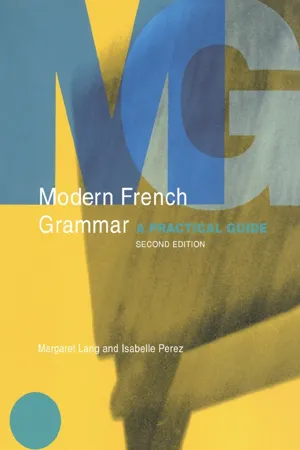
- 320 pages
- English
- ePUB (mobile friendly)
- Available on iOS & Android
About This Book
This new edition of the Modern French Grammar is an innovative reference guide to French, combining traditional and function-based grammar in a single volume. Divided into two parts, Part A covers traditional grammatical categories such as word order, nouns, verbs and adjectives and Part B is organized around language functions and notions such as:
- giving and seeking information
- describing processes and results
- expressing likes, dislikes and preferences.
With a strong emphasis on contemporary usage, all grammar points and functions are richly illustrated with examples. Implementing feedback from users of the first edition of the Grammar, this second edition includes clearer explanations and greater emphasis on areas of particular difficulty for learners of French.
This is the ideal reference grammar for learners of French at all levels, from beginner to advanced. No prior knowledge of grammatical terminology is assumed and a glossary of grammatical terms is provided. This Grammar is complemented by the Modern French Grammar Workbook Second Edition which features related exercises and activities.
Frequently asked questions
Information
Verb tables
Table of contents
- Cover Page
- Half Title page
- Series Page
- Title Page
- Copyright Page
- Contents
- Acknowledgements
- Introduction
- How to use this book
- Glossary
- Section A Structures
- Section B Functions
- Verb tables
- Index of grammar structures and functions